Agile dependency management is an approach for visualizing work coordination between teams and mitigating the impact of lengthy hand-offs.
In this article, we'll dive into the optimal Agile strategies for managing these dependencies and provide a hands-on guide to navigating them efficiently using Businessmap as a powerful project and portfolio management tool.
What Is the Agile Solution to Dependency Management?
Agile teams adopt various best practices to effectively manage dependencies, ensuring smooth workflow and timely delivery of projects.
- Visualization of Dependencies: Using boards (like Scrum or kanban boards) to visually map out tasks and their dependencies helps teams understand the workflow and spot potential bottlenecks early.
- Regular Communication and Collaboration: Agile teams prioritize open, continuous communication among team members and with stakeholders to quickly identify and address dependencies. Tools like daily stand-ups and cross-team meetings are essential.
- Cross-Functional Teams: Forming teams with a broad range of skills can reduce dependencies on external teams or individuals, as the team can handle more types of tasks internally.
- Flexible Planning: While Agile teams have plans, they remain flexible and ready to adjust their priorities as dependencies and project dynamics evolve.
We'll focus on the first practice and how teams can visualize dependencies and manage the flow between them.
Five Ways Agile Teams Manage Dependencies Using Visualization
Lack of visibility on dependencies is a recurring challenge among teams adopting Agile project management.* Here are five ways to address such hurdles using Businessmap.
1. Dependency Management on a Team Level with Parent-Child Links
The first way to tackle dependency management in Businessmap is to use parent-child relationships between work items, which are portrayed as kanban cards and applied on a project management board.
To set the ground, let's start with a basic scenario in which you need to manage dependencies between team projects' tasks. Your first step would be to create a kanban board and visualize the projects and work items that your team is working on.
Let’s imagine that your team has committed to several projects, and their completion depends on individual work items. To visualize this structure, all you have to do is build parent-child relationship links between each project and its building components.
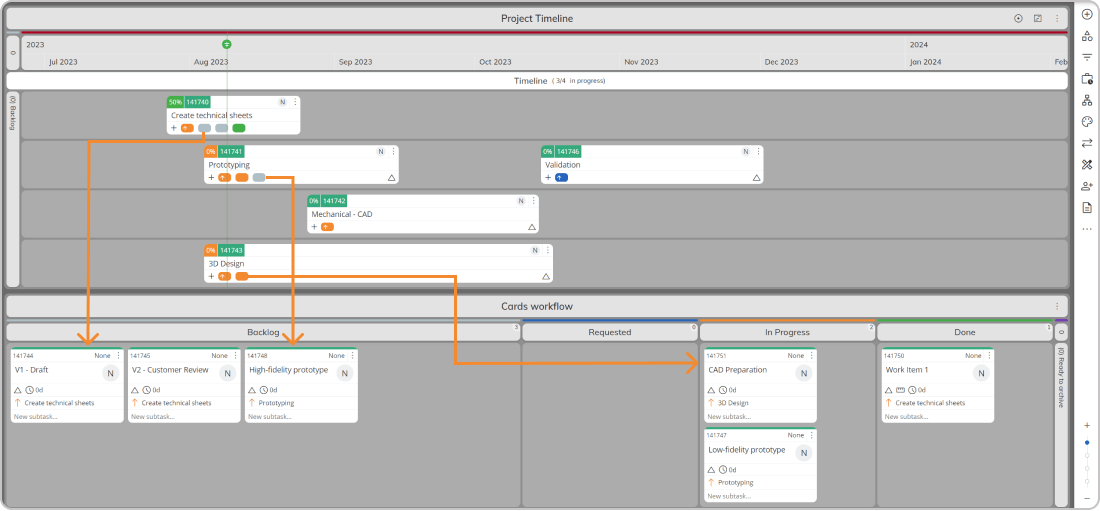
2. Dependency Management on a Team Level with Predecessor-Successor Links
Another option is to set a rule of order between work items. You can specify that one work item is the predecessor of another, meaning it must be completed before the successor can start. This helps manage the work sequence. To deal with that, Businessmap allows you to visualize the dependency with the help of predecessor-successor links between the two work items.
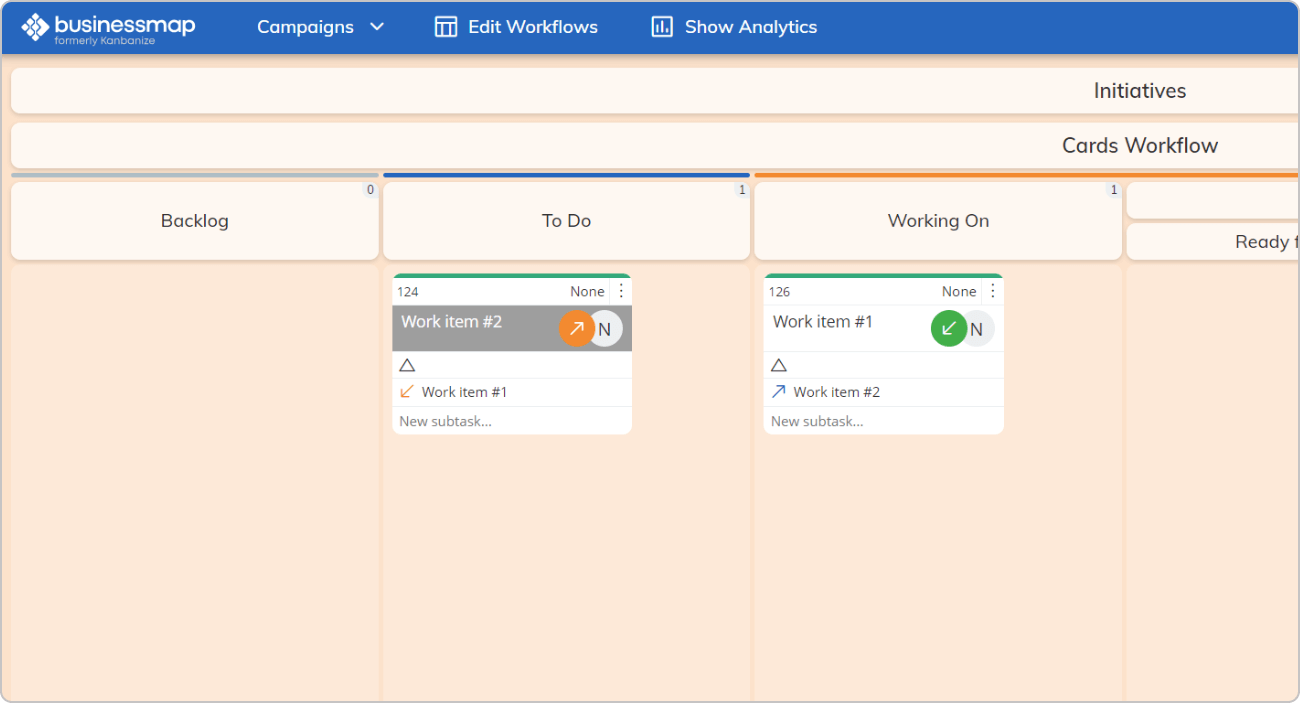
Once the link is created, the kanban cards automatically generate visual signals, indicating the relationship between the two work items. This can be very beneficial to any project manager as it provides instant visibility into the dependencies between individual tasks.
3. Managing Cross-Team Dependencies
When dealing with multiple projects across teams, you often need to be aware of their dependencies. Here, the structure can be a little bit more complicated, but the idea of visualization remains the same. You only have to take it one step above - to the portfolio level.
Having said that, your first step in visualizing cross-team dependencies between multiple projects is to create a portfolio board within your Management Workspace in Businessmap. This will be a management hub where you can plan your high-level projects or initiatives without losing track of their execution across teams, including the dependencies between them.
For instance, you can create a high-level initiative and visualize how it links to three different teams and their respective projects directly on your portfolio board using the Linked Workflows functionality.
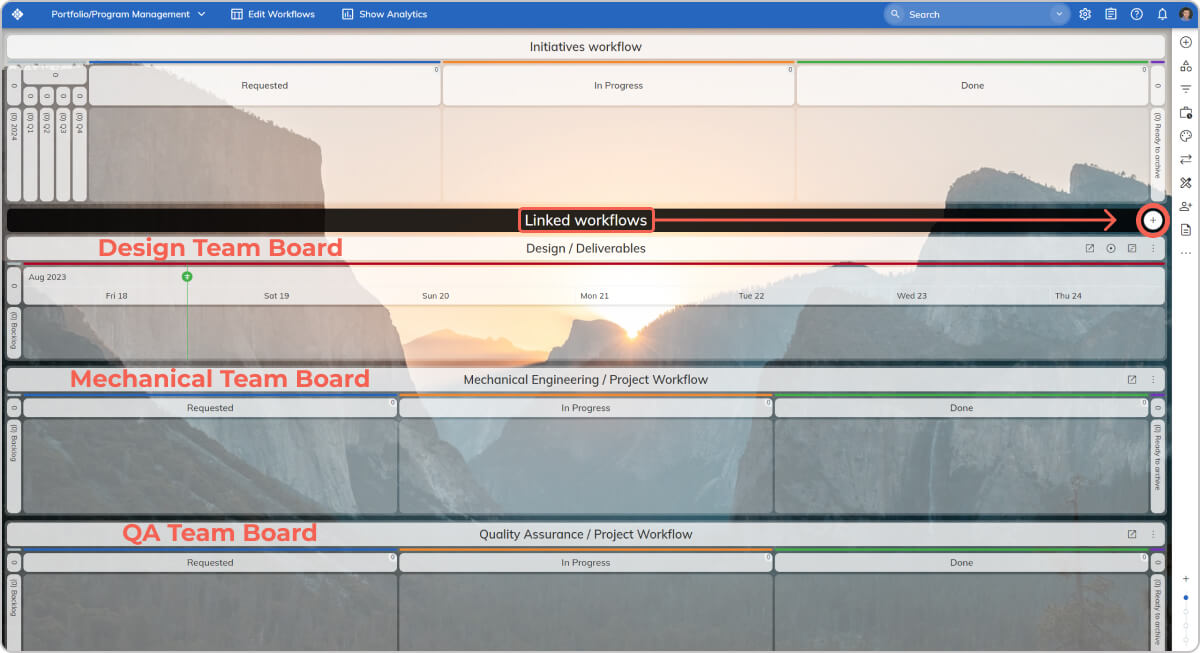
Using Businessmap, you can employ the parent-child card relationship to link the structure together. The software capabilities allow you to establish connections between the teams' projects and the required dependencies between them.
For instance, a completed project by the Design team can be marked as an enabler for the Mechanical team to start planning their next deliverable in more detail.
Just like the dependencies between the team's work items, when the two projects are linked together, visual signs on the kanban cards indicate whether one project is a predecessor or a successor to another.
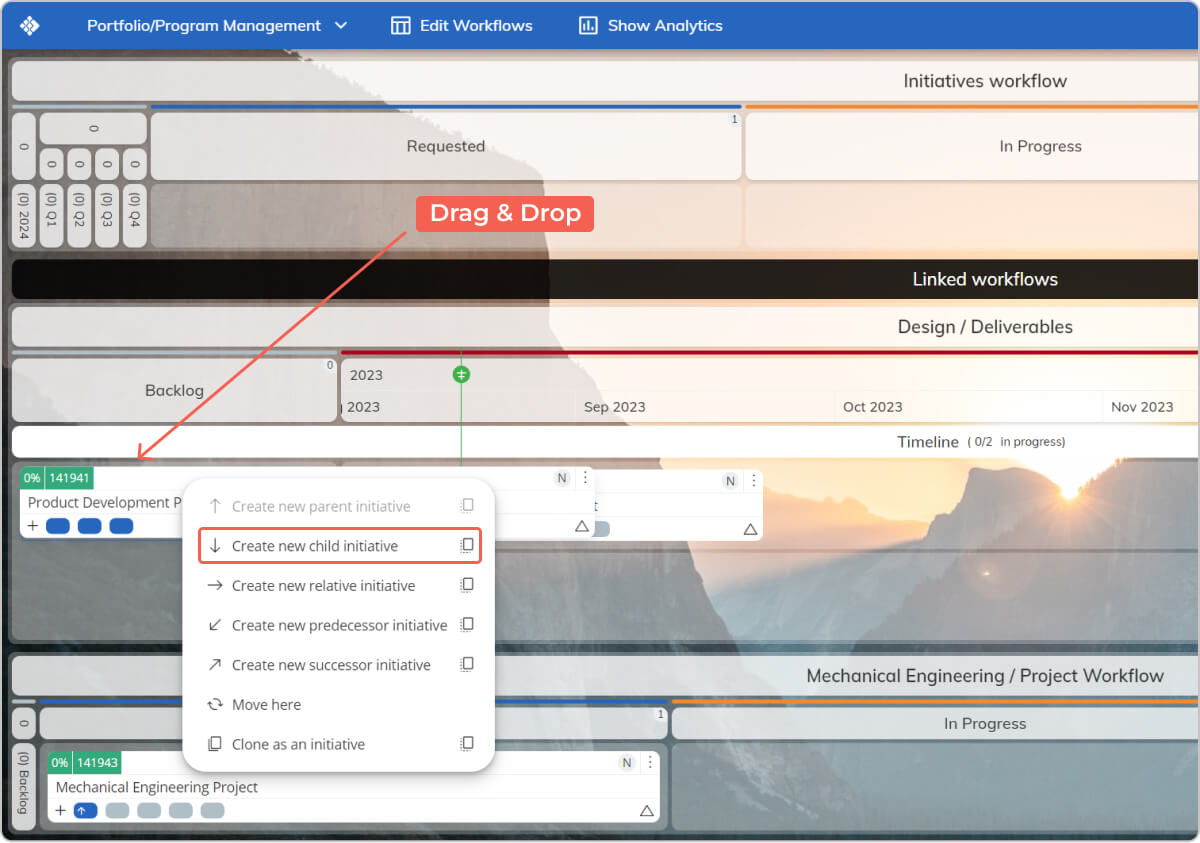
4. Managing Dependencies between Teams Working on the Same Project
Another scenario is when both teams have to contribute to one common project or initiative. The only difference here is that the teams will be working on the project's components which can be deliverables, Agile epics, or user stories.
The idea, however, still remains the same. Your aim should be to visualize cross-team dependencies between the deliverables and thus enable clear transparency for all concerned parties across the project structure.

5. How to Manage Constraints with Visual Sugnals?
In project management, internal and external bottlenecks and constraints form dependencies between teams or individual team members, which can contribute to delays. To deal with these, you should visualize them as well and ensure that the party you are dependent on provides their input as soon as possible.
Continuing from the portfolio example above, let's imagine that a project unexpectedly becomes dependent on another team inside the organization. This can happen due to many reasons, such as insufficient details, unavailable resources, need for rework, etc.
With Businessmap, you can deal with this by visually signaling that a new dependency has just emerged. To do this in practice, you can apply a visual blocker to one of the projects.
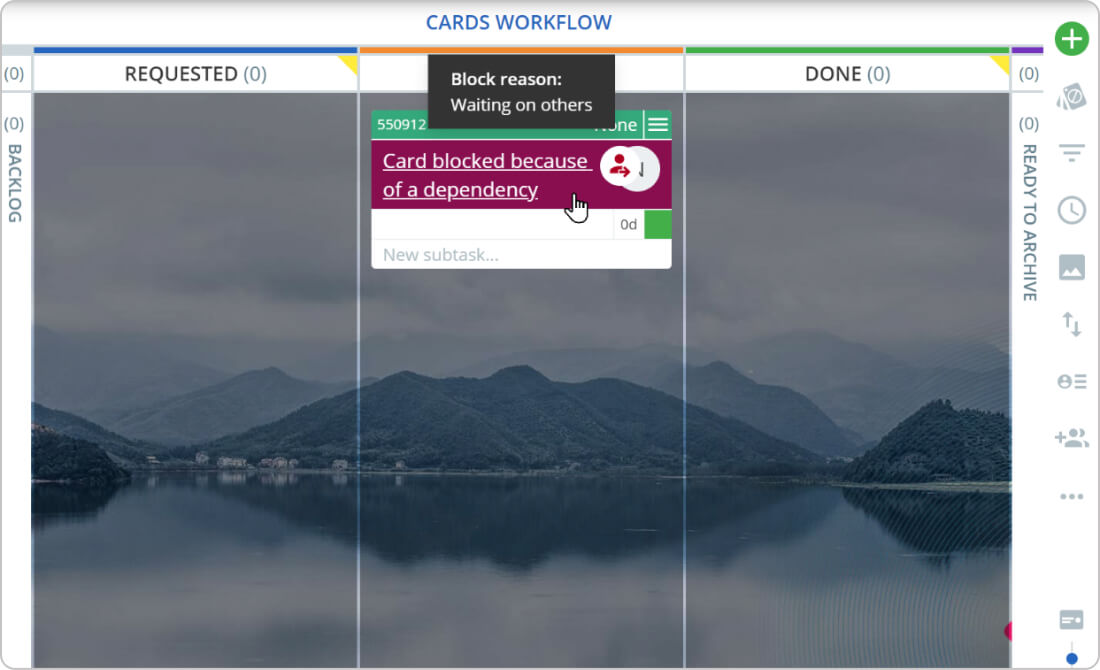
Once that's done, your next step would be to inform the internal party that their input is necessary for the work to resume. We suggest you follow up with them regularly so the dependency can be resolved quickly.
What Are the Benefits of Dependency Management through Visualization?
Visualizing dependencies in project management offers several benefits that can significantly enhance the efficiency and effectiveness of a team's workflow. Here are some key advantages:
- Facilitate Identification of Workflow Roadblocks: Transparent visualization of a workflow allows you to easily identify the issues' root causes and improve the flow of your teams’ work processes.
- Improve Team Collaboration: The bigger the organization or department, the more cross-team dependencies there will be. Visualizing them enables managers to understand structures and workflows and improves cross-departmental collaboration. Visualization also encourages team members to engage in discussions and develop their own service delivery policies.
- Improve Project Prioritization: Visualizing dependencies in a single management hub enables all relevant stakeholders to better understand the sequence of projects and links between teams. As a result, managers become equipped with a tool to better prioritize projects/initiatives and more quickly adapt to emerging changes or problems.
- Drive Transformation Initiatives: Grand initiatives such as digital or Agile transformation, for instance, drive companies toward applying new structures and ways of working with the idea of reducing dependencies as much as possible and delivering faster. However, in the core of business agility lies adaptation which means that you need to adapt your processes to what works best for your unique environment.
That's why we suggest that you first unhide optimization potential within your organizational network through visualization before taking any revolutionary actions.
Final Words
Managing dependencies is a huge topic and a frequent problem in Agile that I've only scratched the surface of. Regardless of that, the concept remains the same.
Visualizing dependencies between teams, team members, tasks, or projects is a powerful strategy for enhancing project outcomes, team coordination, and stakeholder satisfaction by providing a clear, actionable view of the project's structure and dynamics.
Once you have the foundations, then experiment to see what works best for you.
If that means reorganization, reorganize! Just don't rush to do it only because it has worked for somebody else.
Sources

Nikolay Tsonev
Product Marketing | PMI Agile | SAFe Agilist certified
Nick is a seasoned product marketer and subject matter expert at Businessmap, specializing in OKRs, strategy execution, and Lean management. Passionate about continuous improvement, he has authored numerous resources on modern-day management. As a certified PMI practitioner and SAFe Agilist, Nick frequently shares his insights at Lean/Agile conferences and management forums.



